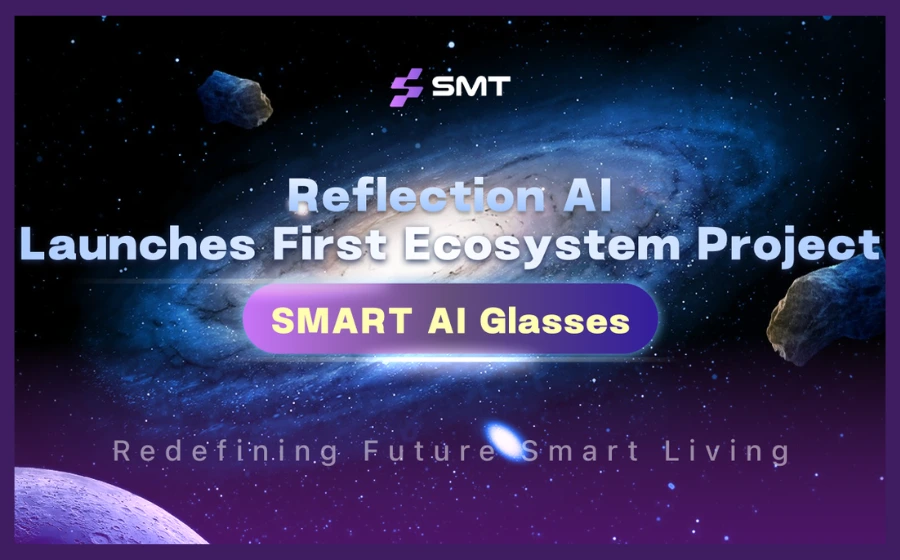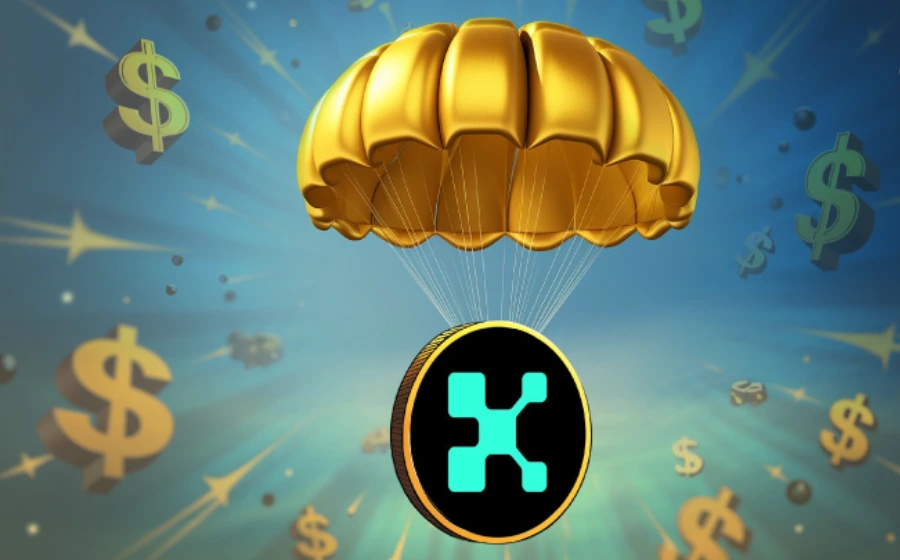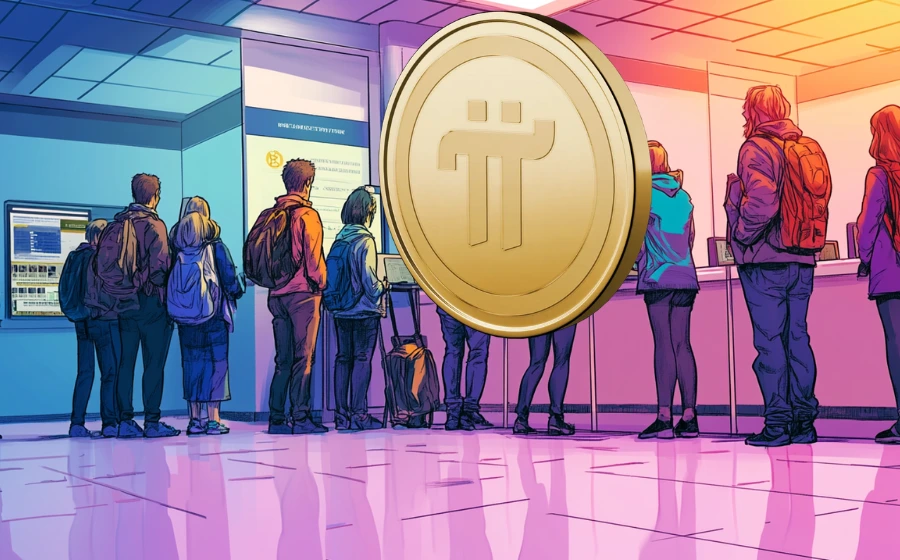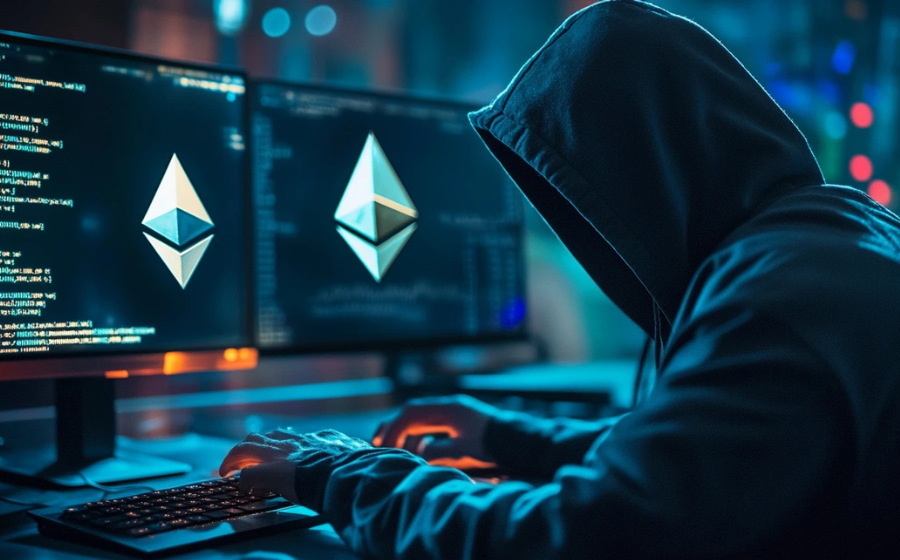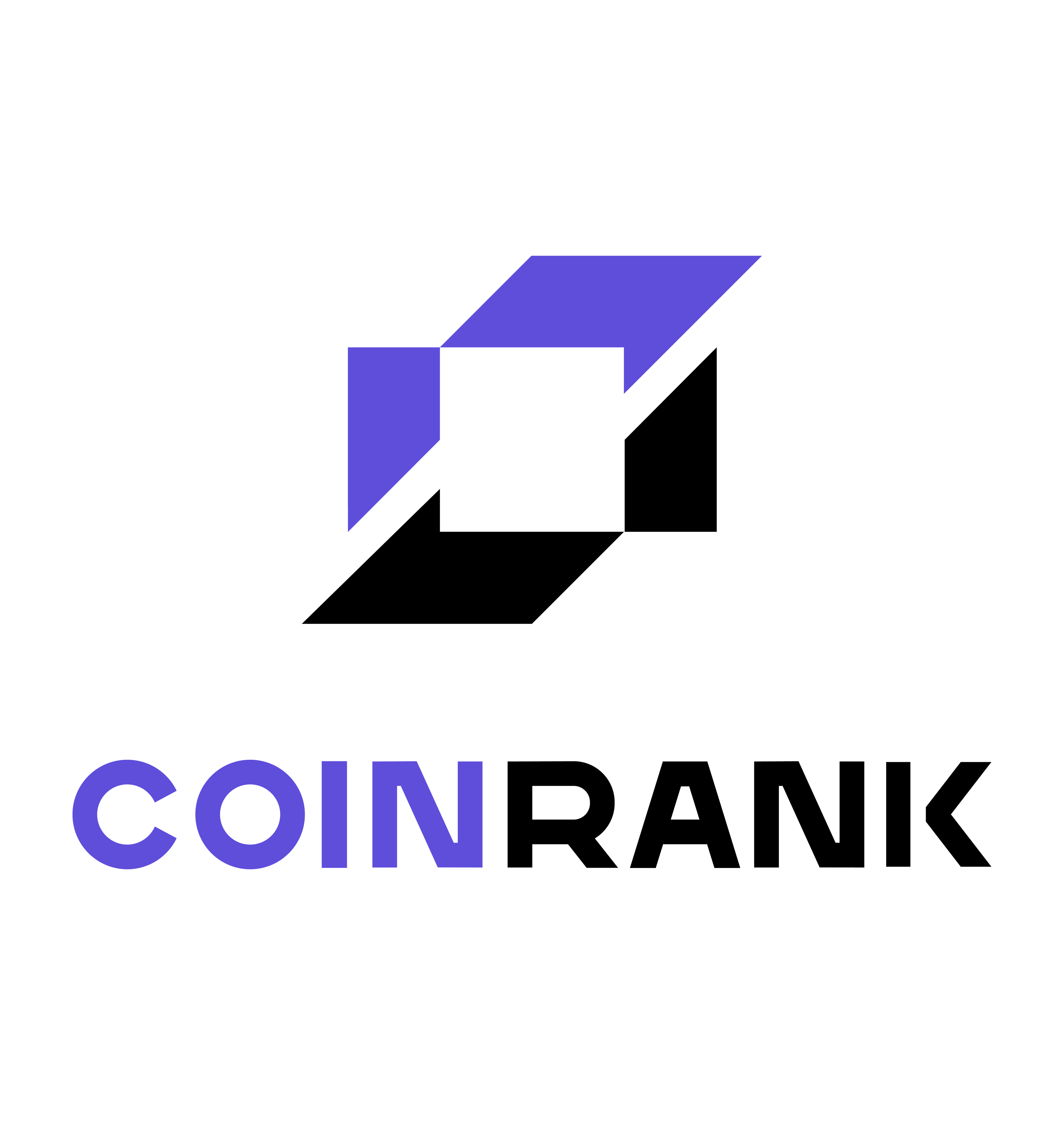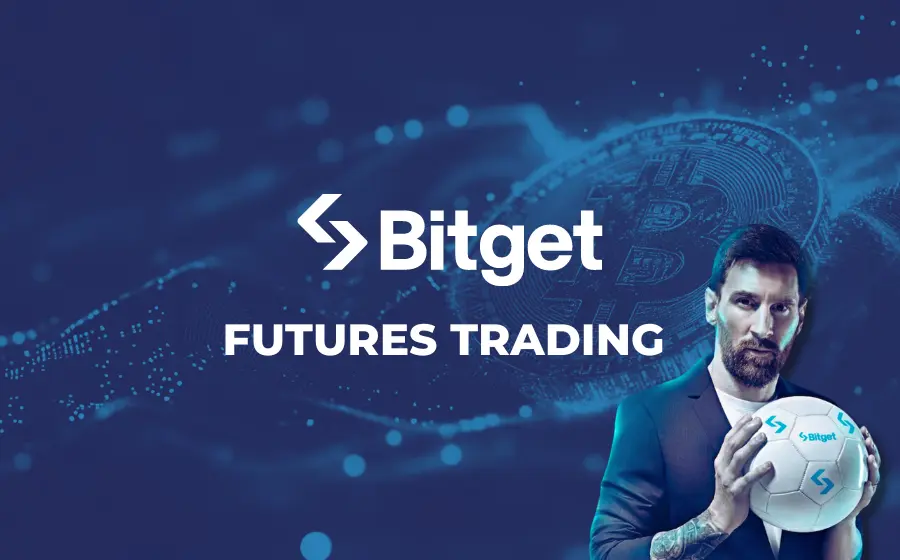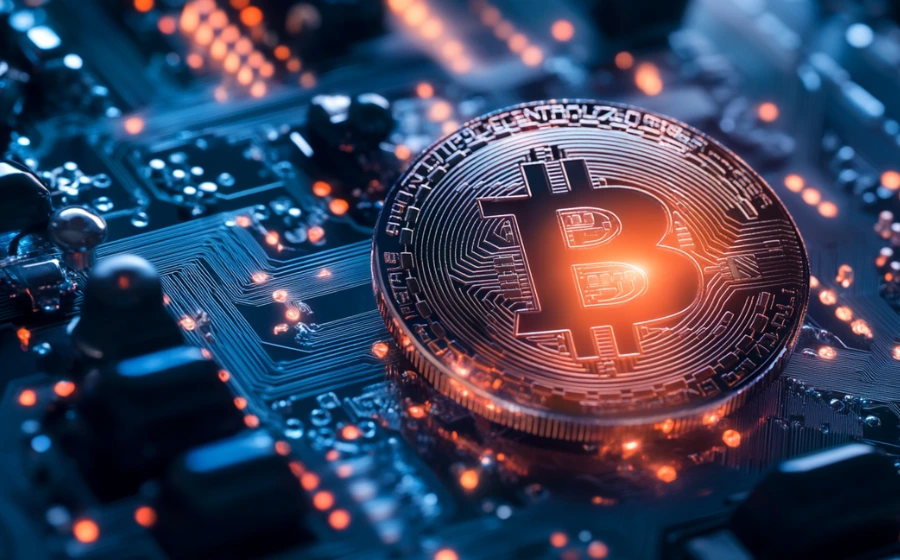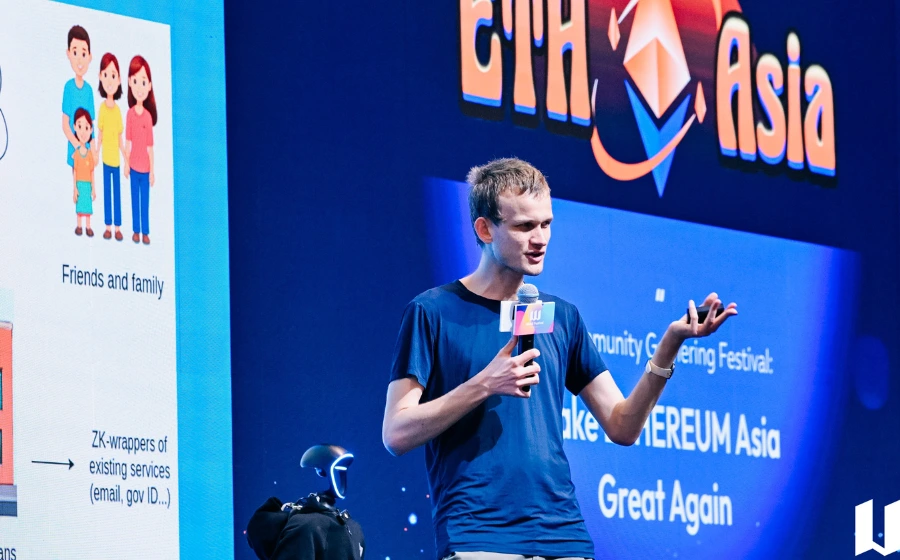
KEYTAKEAWAYS
- Vitalik shares Ethereum’s roadmap, including L1 upgrades and L2 scaling, aiming for higher speed, security, and accessibility for global users.
- Upcoming Pectra and Fusaka upgrades will boost L2 throughput dramatically, reaching thousands of transactions per second with data expansion technologies.
- Account Abstraction will make wallets smarter, safer, and easier to use, paving the way for mainstream adoption of Ethereum.

- KEY TAKEAWAYS
- HOW IS ETHEREUM DOING NOW?
- BIG UPGRADES: PECTRA AND FUSAKA WILL SPEED THINGS UP
- L1 AND L2 CAN LEARN FROM EACH OTHER
- GOALS FOR 2026: A FASTER, MORE DECENTRALIZED L1
- ACCOUNT ABSTRACTION: SMARTER AND SAFER WALLETS
- MORE INNOVATIONS: PRIVACY, SPEED, AND THE FUTURE
- VITALIK’S VISION: ETHEREUM AS THE “WORLD COMPUTER”
- DISCLAIMER
- WRITER’S INTRO
CONTENT
On April 9, 2025, the Hong Kong Web3 Festival (HKweb3 Festival) had a major highlight — Ethereum’s founder Vitalik Buterin gave a keynote speech at ETHAsia 2025. The talk, titled “The Future of Ethereum Layer 1,” attracted a lot of attention from blockchain fans, developers, and everyday users.
In his usual clear and thoughtful style, Vitalik shared Ethereum’s current progress, future plans, and how to make this “world computer” faster, safer, and easier to use.
HOW IS ETHEREUM DOING NOW?
Vitalik started with an update on Ethereum. He explained that Ethereum’s main network (Layer 1 or L1) currently handles about 15 transactions per second (TPS). That might not sound like a lot, but it’s much better than it was ten years ago.
One big reason for the improvement is that the Gas limit has increased six times, reaching 36 million. (Gas is like the fuel for the Ethereum network — the higher the limit, the more transactions the network can process.)
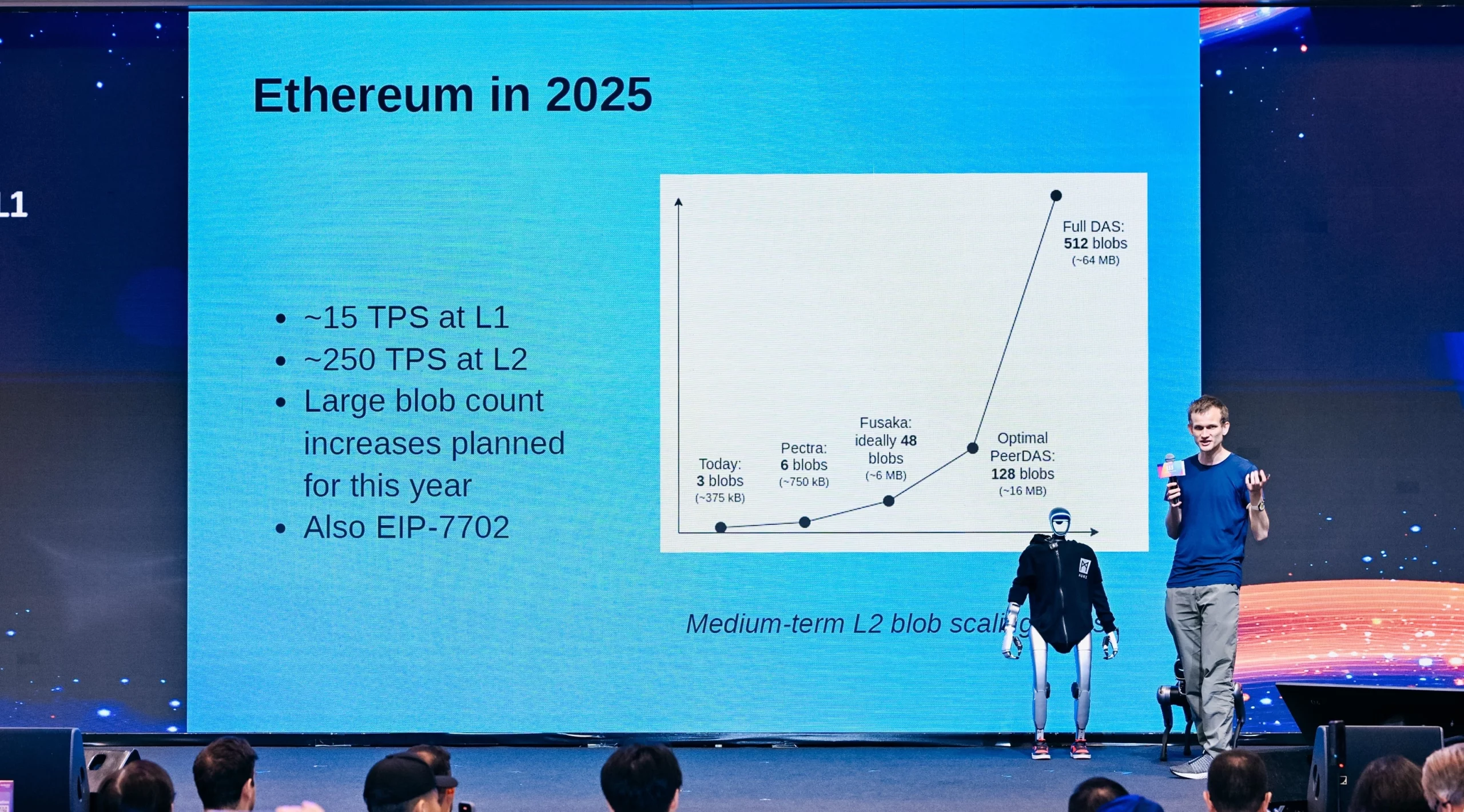
But the real “speed boost” comes from Layer 2 (L2) solutions, which are built on top of L1. L2 networks act like fast highways to handle a lot of transactions. Today, L2 systems can handle around 250 TPS, far more than L1.
Vitalik gave a nice comparison: L1 is like the foundation of a city, responsible for safety and stability. L2 is like express lanes that make everything faster and cheaper. They work together, and both are important.
However, Vitalik also reminded everyone that L1 can’t just stay in the background. If L2 ever fails (for example, due to a bug or network issue), L1 needs to be strong enough to take over, protect users’ funds, and fix problems. So, L1 must keep improving too.

BIG UPGRADES: PECTRA AND FUSAKA WILL SPEED THINGS UP
Vitalik then talked about Ethereum’s upgrade roadmap, especially two exciting updates: Pectra and Fusaka. These upgrades aim to let Ethereum handle more transactions while staying secure and decentralized.
Pectra upgrade will increase the data space for L2 networks. Right now, Ethereum uses a feature called Blobs to store L2 data — each block can hold 3 Blobs (about 375KB total), which supports around 250 TPS. After Pectra, this will double to 6 Blobs, allowing up to 500 TPS. It’s like expanding a 2-lane highway into 4 lanes — much more traffic can pass.
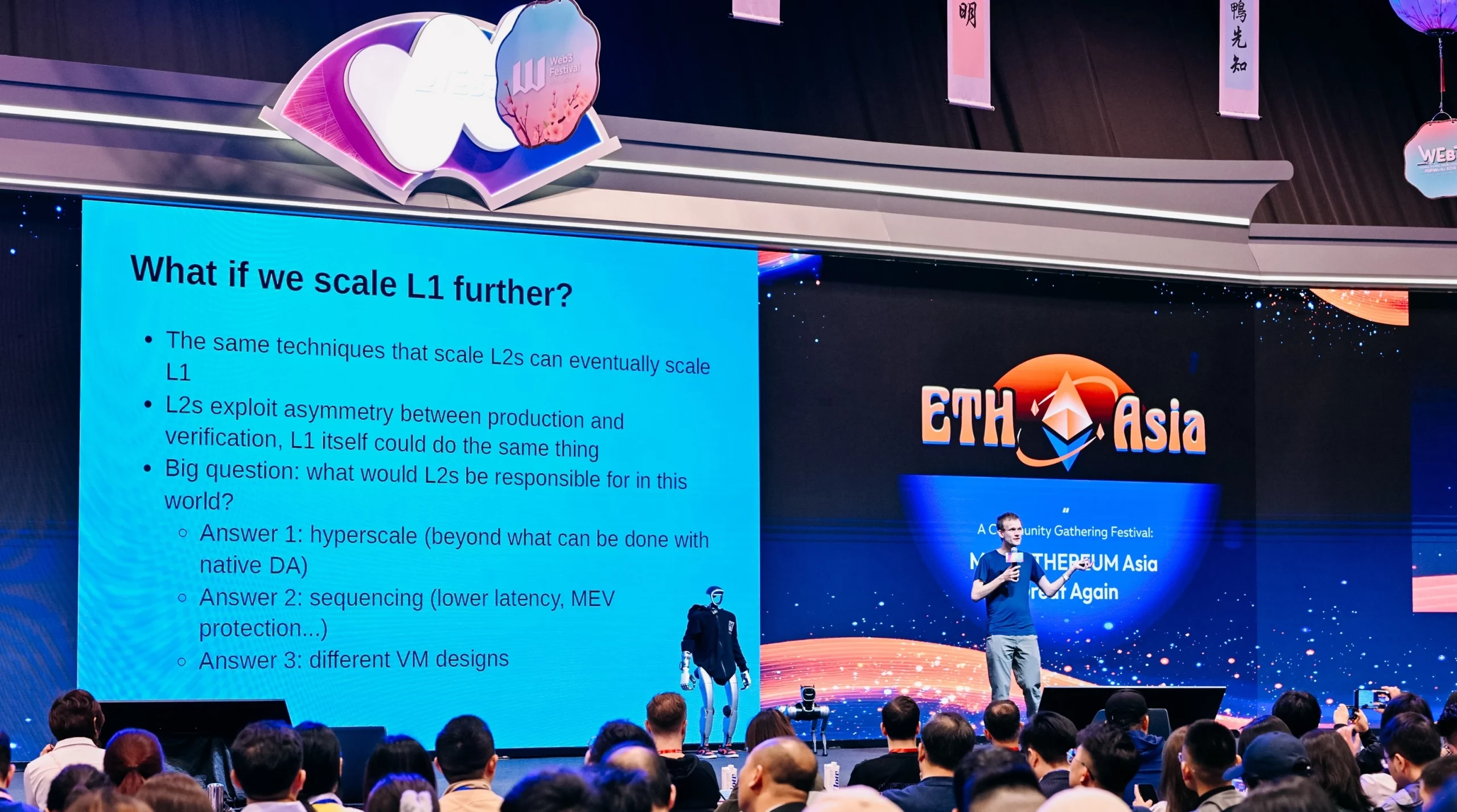
Fusaka upgrade is even more powerful. Vitalik said this might come in the second half of 2025. It could increase the number of Blobs to 48, and in the future, with a technique called Data Availability Sampling (DAS), maybe even up to 512 Blobs. At that point, Ethereum’s L2 could reach tens of thousands of TPS — fast enough for games, payments, NFTs, and more, with almost no delay.
L1 AND L2 CAN LEARN FROM EACH OTHER
Vitalik shared another interesting idea: L1 and L2 can learn from each other.
L2 networks are very efficient because they separate the production and verification of transactions — creating transactions happens quickly, and verifying them can be done later. L1 could borrow this strategy to improve its own performance.
On the flip side, L2 also has its own special strengths:
- Massive scale: L2 can handle many more transactions than L1.
- Faster ordering: Transactions can be confirmed faster, and problems like unfair ordering (such as MEV) can be reduced.
-
Innovation lab: L2 can try out new ideas and virtual machines (VMs), giving developers more room to be creative.
In short, L1 builds the foundation for safety and stability, while L2 experiments and moves fast — together, they make Ethereum stronger.
GOALS FOR 2026: A FASTER, MORE DECENTRALIZED L1
Looking ahead, Vitalik said 2026 will be a key year. Ethereum plans several upgrades to make L1 faster without losing its core principle — decentralization. This means keeping Ethereum open and fair, with many people around the world running nodes, not just big companies.
Some of the planned improvements include:
- Access lists: To let the network handle more things at the same time, like multitasking on a computer.
- Delayed execution: To optimize how and when transactions are processed.
- Multi-dimensional Gas pricing: A better way to calculate transaction costs and make things more efficient.
- EIP-4444 (history expiration): Nodes won’t need to store all historical data anymore — just the recent data. This will reduce disk space usage and make it easier to run a node.
-
FOCIL: A simpler protocol design to make development and maintenance easier.
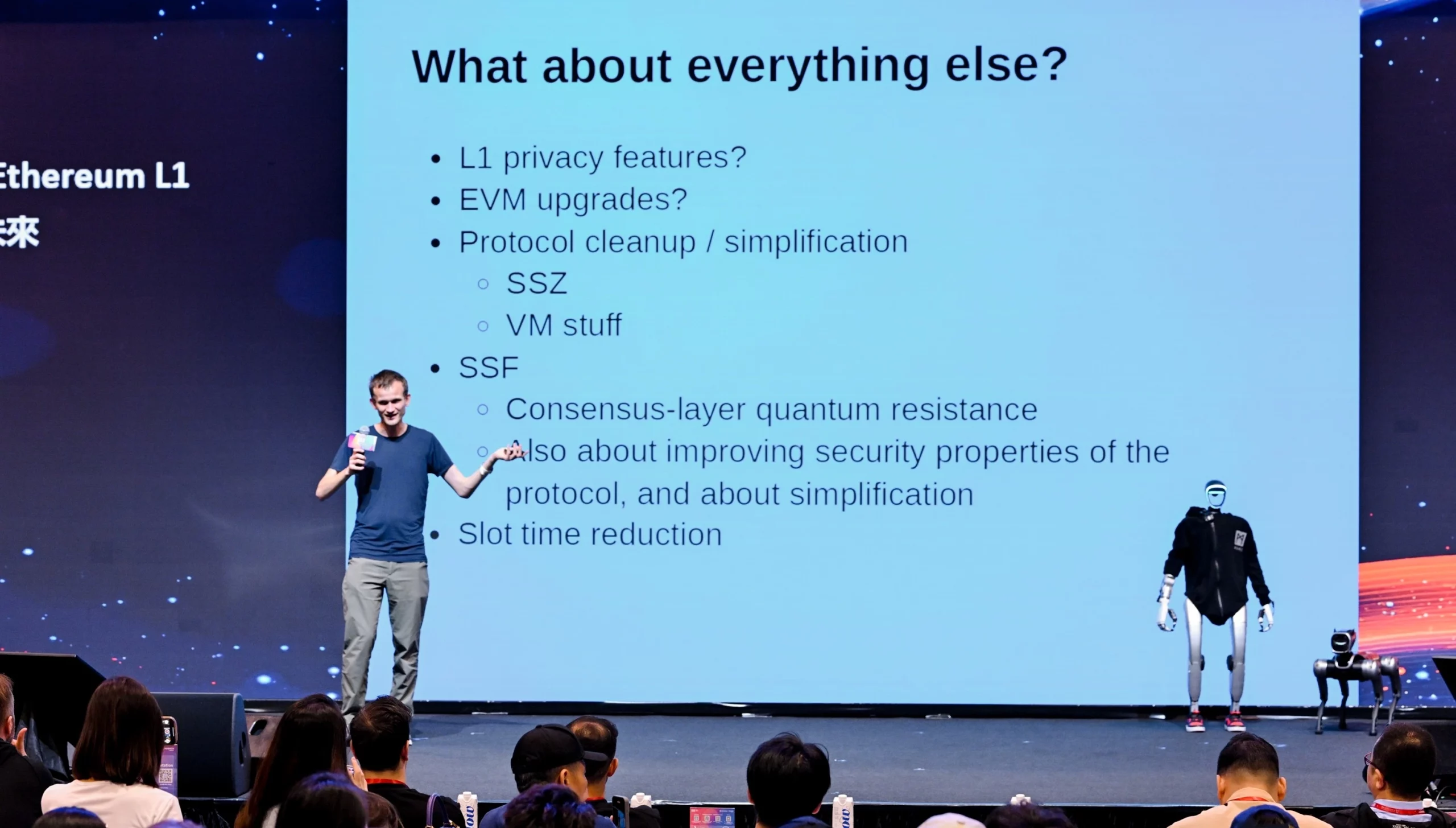
These ideas may sound technical, but the goal is simple: make Ethereum faster, easier to use, and still open to everyone.
ACCOUNT ABSTRACTION: SMARTER AND SAFER WALLETS
One major topic Vitalik discussed was Account Abstraction, a powerful feature that could change how users interact with Ethereum.
Right now, Ethereum has two types of accounts: normal accounts (like your wallet address) and smart contract accounts. Account Abstraction wants to combine them into one smart, flexible account.
Vitalik mentioned a recent proposal, EIP-7702, which is a first step toward this vision. Benefits include:
- More security: Protection against quantum computers in the future.
- More convenience: Use “Paymasters” to let someone else pay your Gas fee, or use other tokens like USDT instead of ETH.
- Social recovery: If you lose your private key, friends or trusted people can help you recover your wallet — safer than using a seed phrase.
-
Smart features: Your wallet can automate tasks like scheduled payments or batch transactions.
Vitalik said Account Abstraction is like giving your wallet a super brain — making it easier for beginners and safer for everyone. It could be a big step for Ethereum to reach mainstream users.
MORE INNOVATIONS: PRIVACY, SPEED, AND THE FUTURE
Besides the main updates, Vitalik also talked about other areas Ethereum is working on:
- Privacy: Better protection for users’ information and transactions.
- EVM upgrades: Improving Ethereum’s virtual machine for faster, more powerful apps.
- Protocol simplification: Cleaning up old code to make the system lighter and easier to maintain.
- Quantum-resistant consensus: Preparing for future threats from quantum computing.
- Faster slot time: Reducing the time between blocks so that transactions confirm faster.
He also mentioned that AI may play a big role in Ethereum’s future — helping DApps (decentralized apps) become smarter and more user-friendly.
VITALIK’S VISION: ETHEREUM AS THE “WORLD COMPUTER”
In his final words, Vitalik lit up the stage with a strong message:
“Ethereum’s future is not just about L1 or L2 upgrades. It’s about building a diverse, powerful ecosystem — the true World Computer.”
He hopes Ethereum won’t just be a blockchain network, but a platform for all kinds of applications — from finance to gaming, from social media to art, and even AI-powered systems.
Every Ethereum upgrade is aimed at making blockchain easier for people to use, while protecting their freedom and security. If L1 and L2 continue working together and technology keeps improving, Ethereum could become a truly global, open, and fair network — used by people all over the world.
▶ Buy Crypto at Bitget
CoinRank x Bitget – Sign up & Trade to get $20!

